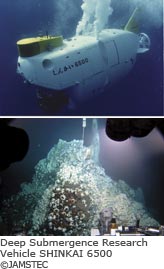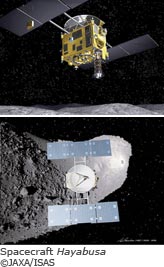"Made in Japan" denotes precision, and leading-edge technology. Japan decided early on to invest in fostering such technology to combat global warming and is making headway in this challenging field. |
||
Automotive technology to combat global warming |
||
 |
Because they burn gasoline, cars produce "gasoline waste" in the form of carbon dioxide, the major cause of global warming. In 1997 Toyota Motor launched the Prius hybrid car, which can run on either its gasoline engine or its electric motor and thus significantly reduce carbon dioxide emissions. The vehicle achieves spectacular fuel consumption of 20-25 km per litre in ordinary driving conditions. Motors, created in the 19th century, are an obsolete technology, one in which a power increase of only 1% was deemed a major advance. The Japanese component manufacturer supplying the Prius's engine has delivered a power boost of more than 40%. Their manufacturing technology for the engine°«s core electromagnetic steel plates leads the world. |
|
The challenge of the depths |
||
 |
Together with outer space, the ocean depths are one of our final frontiers. The Japan Agency for Marine-Earth Science and Technology (JAMSTEC) has developed the Shinkai 6500, a manned submersible capable of diving to 6,500 metres that has transported the world°«s scientists to the ocean floors. Shinkai 6500 made its 1,000th dive in March 2007, becoming the only manned
submersible to have operated consistently at depths of more than 6,500 metres. The ocean floor is home to many hydrothermal vents. Issuing geothermally heated water, these fissures in the earth°«s crust are home to creatures virtually unchanged from when life emerged on our planet about four
billion years ago. Deep-sea research like the Shinkai 6500°«s is starting to unlock the secrets of the birth of life. |
|
The frontier of outer space |
||
 |
Space technology is another arena in which Japan has been making remarkable progress. Itokawa is an asteroid only 600 metres in length, and is 300 million kilometres from earth. The asteroid explorer Hayabusa developed by Japan's Institute of Space and Astronautical Science (ISAS, part
of the Japan Aerospace Exploration Agency, or JAXA) landed on it successfully in 2005. It has attempted to recover surface soil to bring back to Japan. If successful, this will be the first time since the Apollo missions that material from space, other than lunar soil, has been brought back to earth,
creating a landmark in our history. Now on its return journey, Hayabusa is scheduled to land in 2010. JAXA has also launched the Daichi advanced land observation satellite. Part of the mission of this satellite is to map all the earth's terrain in detail, and it is providing image data crucial for responding to major natural disasters. |
|
Text by Kazuma Yamane (Non-fiction Writer)Copyright 2007 - Ministry of Foreign Affairs, Japan |
||









